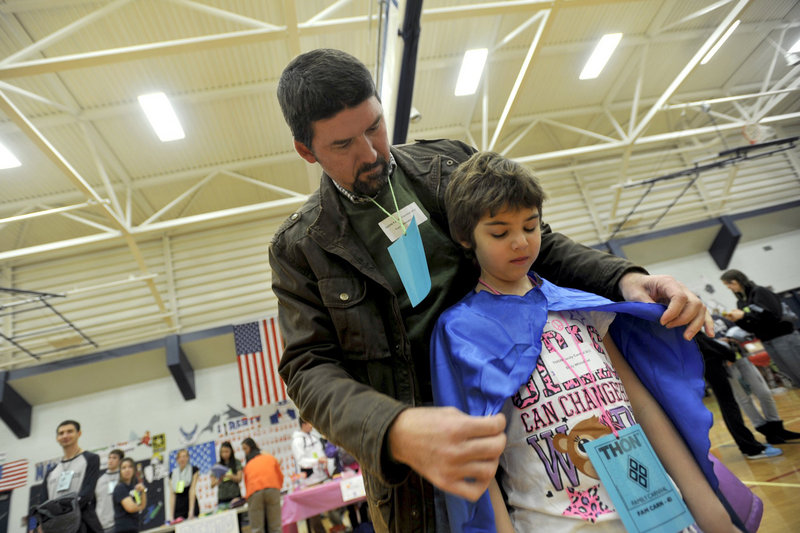STATE COLLEGE, Pa. – After a two-year battle with acute lymphoblastic leukemia, a 7-year-old Pennsylvania girl became the first child to receive an experimental treatment that used a genetically modified version of her own immune system to fight it off.
Emily “Emma” Whitehead and her parents, Tom and Kari Whitehead of Philipsburg, Pa., turned to experts at the University of Pennsylvania and the Children’s Hospital of Philadelphia for help when chemotherapy failed and she could not remain in remission long enough to receive a bone-marrow transplant.
In April, Emily became the first child have her own T cells — infection-fighting white blood cells in her immune system — genetically engineered to recognize and attack the cancer cells in her body. The doctors removed her T cells through a process similar to blood donation, programmed them to attack her cancer, grew them and injected them back into her body.
Two months later, tests on Emily had found no cancer and she got to go home.
Since then, the doctors and researchers have been using what they learned from Emily’s case to treat other cancer patients who have run out of conventional options. They described their work this weekend at the American Society of Hematology’s annual meeting in Atlanta.
Their aim is to eventually replace bone-marrow treatments with the new T cell therapy.
T cells are “immune cells in the body that are actually very good at getting rid of cells that don’t belong,” said Dr. Stephen Grupp, the pediatric oncologist who treated Emily, but “unfortunately, cancer is really good at dodging T cells.”
Researchers have been working for years to develop a way to “train” these cells to multiply and attack cancer.
But “all those efforts have been essentially unsuccessful because once you get a big tumor in your body, it’s very hard to marshal up the immune system,” said Michael Kalos, director of the Translational and Correlative Studies Laboratory in Penn’s Perelman School of Medicine.
So researchers decided to attempt to grow the T cells outside the body so there would be plenty to fight off a tumor.
“So instead of trying to stimulate or trigger a rare cell in somebody’s body by a vaccine, you give them the end product of that, which is a billion cells that are engineered to recognize what you want them to recognize,” Kalos said.
Emily has leukemia of the B cells. Researchers are “putting in a new gene using a virus. That gene gets incorporated into the actual DNA of the cell,” Grupp said.
“You could call that the ‘guided missile rationale,’” said Bruce Levine, director of the Clinical Cell and Vaccine Production Facility, because the T cells only kill the B cells. Traditional chemotherapy doesn’t have a specific target.
Send questions/comments to the editors.



Success. Please wait for the page to reload. If the page does not reload within 5 seconds, please refresh the page.
Enter your email and password to access comments.
Hi, to comment on stories you must . This profile is in addition to your subscription and website login.
Already have a commenting profile? .
Invalid username/password.
Please check your email to confirm and complete your registration.
Only subscribers are eligible to post comments. Please subscribe or login first for digital access. Here’s why.
Use the form below to reset your password. When you've submitted your account email, we will send an email with a reset code.